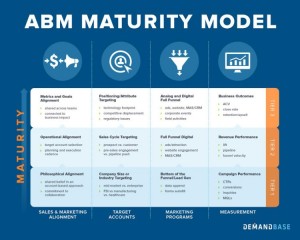The Marketing Owner understands business goals and is able to prioritize the work that needs to be done.
Today we continue our deep dive into Roles by looking at the role of the Marketing Owner. This role is key to ensuring that business goals and priorities are clearly understood, and is the connective tissue between stakeholders that request work and the team that gets the work done.
If you’re familiar with Scrum, you may have heard of a Product Owner. The Marketing Owner role is essentially the same, but the nuances of working in marketing versus managing a product may alter the role slightly.
Who fits into this role?
A common question I often get asked is who at a company is best suited to be the Marketing Owner? A common answer is a strategist because there may be a lot of similarities between the job they’re already doing and the role on an agile marketing team. However, this can vary so much from company to company, so here are some good qualities to look for in filling this role:
- Has authority to make decisions for the team regarding priorities of work.
- Knowledgeable about the company and the market it serves.
- Works well both in the day-to-day tactical world as well as with a larger strategic vision.
- Is available to the team to answer questions about the work, but doesn’t tell the team how to get their work done.
Why the Marketing Owner role is the backbone to success of the team
While this role is considered an equal team member, and there isn’t hierarchy on an agile team, the role can make or break a team because the Marketing Owner is guiding the team directionally. Without that single person communicating the vision and priorities, the team is often pulled in a million different directions.
I once trained a large retailer that had been working in agile marketing for a while, but had never set up a Marketing Owner role. After listening to me talk about it in class, they realized that this was the reason that their team was overloaded. Instead of a single person to filter all of the stakeholder requests through, every team member was exposed to them — so they were often working on conflicting priorities.
Prioritizing work is essential
The Marketing Owner’s ability to prioritize work effectively is really important. Within the Navigator, we set out a pretty easy system for doing that. The Marketing Owner is responsible for writing the Guidepoint, which helps directionally navigate the team at a high level. The Blueprint is the tool the Marketing Owner creates to share quarterly work that the team is planning to deliver, but this is meant to be flexible and initiate conversations. From there a single-ordered backlog is owned by the Marketing Owner and it’s this person’s job to continually shuffle this as new priorities surface.
While we’ve given the Marketing Owner a lot of tools to make this job easier, this role really needs to be several steps ahead of the team and have a great working relationship with all of the team’s key stakeholders.
Effective leadership
It’s important for the Marketing Owner to be an effective leader. This means that the team should always be able to ask why work was chosen and what outcome is desired, but the Marketing Owner needs to stay out of the team’s way when it comes to how the work will get done. I make the clear distinction between the Marketing Owner’s role and the rest of the team by saying, the Marketing Owner owns the “what” and the team owns the “how”. If the Marketing Owner is overly prescriptive, they aren’t likely to get most creative and innovative ideas from the team.
The post Marketing Owner: Getting started with the Agile Marketing Navigator appeared first on MarTech.
MarTech(30)
Report Post





